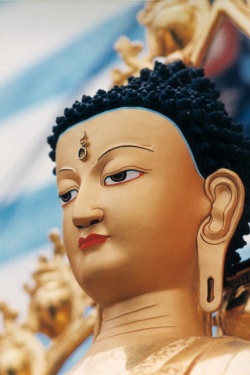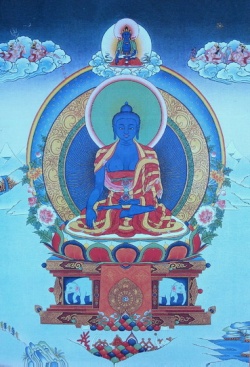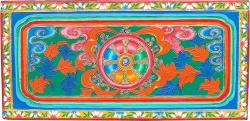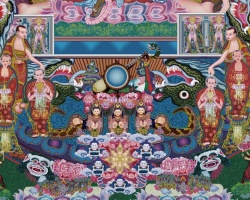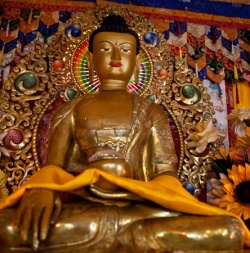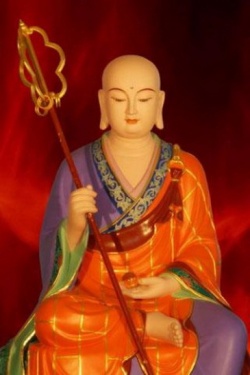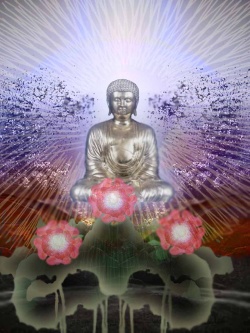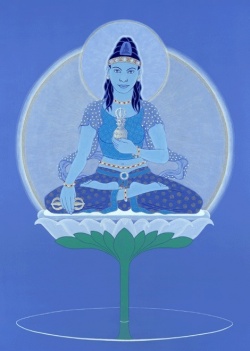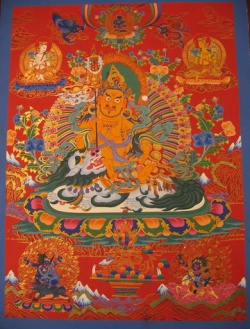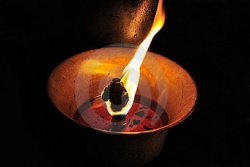The Meaning of Lineage in Buddhist Practice
A lineage in Buddhism is a line of transmission of the Buddhist teaching that is "theoretically traced back to the Buddha himself." The acknowledgement of the transmission can be oral, or certified in documents.
As Buddhist monks, we regularly visit and work with Buddhist communities and practitioners in both Western and Eastern countries. Given the relatively recent introduction of Buddhism to the West, and given the diversity and breadth of the Buddhist teachings, there are understandably differences in how Western and Eastern Buddhists conceive, practice, and relate to the Buddhist teachings.
One such difference that we have come across personally and that has also been observed by a number of our monastic colleagues, is the tendency for Western Buddhists to start almost every first encounter with another Buddhist by asking the question What lineage do you belong to?
Presumably, one reason why this trend has come about is because many Western Buddhists place a great deal of importance on the issue of lineage. In this post, we discuss what is meant by the term lineage, why it is important to Buddhists, and whether contemporary attitudes towards lineage are actually in accord with the traditional Buddhist teachings.
What exactly is lineage?
The most well-known depictions of lineage in Buddhism refer to it as an unbroken chain of transmission that can be traced from a Buddhist teacher all the way back to the historical Buddha or to another ‘enlightened being’.
Lineage is basically concerned with authenticity and preserving the spiritual potency of the Buddhist teachings. It is a means of ensuring the continuity of the true ‘Buddhadharma’.
A common view held by Buddhists is that when looking for a suitable teacher, one should ensure that they are of an established Buddhist lineage.
The idea is that by working with or receiving teachings from a reputable ‘lineage holder’, a practitioner can reassure themselves that they are in good hands and are getting the ‘real deal’.
According to prominent Buddhist teachers Nyoshul Khenpo and Lama Surya Das,1 a person only becomes a ‘lineage holder’ when, following sustained practice, they gradually realise the inner meaning of the transmitted teachings and infuse them with all aspects of their being.
Thus, being a holder of a particular lineage doesn’t just mean that a person has received teachings or spent time with an accomplished Buddhist teacher, it means that their understanding has effectively ‘merged’ with that of the entire family of lineage forefathers within a given Buddhist tradition. In essence, authentic living lineages are those where the lineage holder has either realized their enlightened nature, or is well on the way to doing so.
Is lineage a good thing?
Asking whether or not lineage is a good thing probably seems like a strange thing to do – especially because in the above paragraph we have already argued that lineage theoretically ensures that a person has the necessary ‘credentials’ to be a Buddhist teacher.
Unfortunately however, things aren’t always this simple. In modern times, it is not uncommon for lineage to be used as a kind of marketing tool in order to attract a large following of people and/or financial support.
Having been trained in the Buddhist teachings by an already ‘established’ lineage holder, there are seemingly an increasing number of instances of Buddhist teachers having all of the necessary education in scholarly and ceremonial matters, but without the more subtle spiritual presence that is the mark of a genuine realized being.
A more colloquial phrase that might be used to refer to a Buddhist teacher meeting this description is ‘all the gear, but no idea’.
This creates an unfortunate situation where all that is passed on from teacher to student is a dry semblance of the original teachings. In such cases and as time goes by, the lineage becomes increasingly corrupted and the advocates and heads of such lineages become more and more caught up in their own importance. The Buddha’s close disciple, Ananda, talked about this in the Sandaka Sutra:
“Again, Sandaka, here some teacher is a traditionalist, one who regards oral tradition as truth, he teaches a Dharma by oral tradition, by legends handed down, by the authority of the collections. But when a teacher is a traditionalist, one who regards oral tradition as truth, some is well transmitted and some badly transmitted, some is true and some is otherwise [p.624]”.2
Please don’t misunderstand what we are saying here. We are not saying that lineage is not important. Rather, what we are saying is that we need to take a step back and look at the underlying purpose of lineage.
As already mentioned above, the whole idea of lineage is to ensure that the teachings and teacher are authentic and that they remain an effective means of bringing about spiritual growth in suitably-disposed individuals.
The most crucial point is that lineage is a means of guiding people to enlightenment, but it is not enlightenment itself. From this point of view, we can say that lineage is a tool – a means to an end. It is a finger that points to the moon, but it is not the moon itself.
Thus, when considering whether to receive spiritual instruction from a given spiritual guide, rather than bog ourselves down with finding out which teachers they have practiced with, what their lineage is, and who ‘endorses’ them, all we actually need to do is identify whether or not they have genuine spiritual presence.
If a teacher has genuine spiritual presence, then this means that they are a Dharma lineage holder. Being a Dharma lineage holder means that a person has realised and dwells within the truth of emptiness. They are 100% authorized to transmit the Buddhist teachings. In fact, in terms of considering whether or not a teacher is authentic, this is the only credential that counts.
If a teacher has authentic spiritual realization we don’t particularly need to concern ourselves with how they got it.
This information is not going to be of much use to us on our journey to enlightenment. Imagine you were the manager of a premier league football team and in a playing field of some forgotten town, one of your scouts accidentally happened upon a truly gifted player.
Having tried the player out in a number of premier division matches, imagine that this player operates on a completely different plane than all of the other team members.
Imagine that he or she literally makes the ball dance, they score goals that seem to be impossible and perform ball tricks that have never been seen before.
Is it useful to spend your time working out whether they have been trained by ‘accredited’ teachers or are you just going to count your blessings and let them win you matches?
In the Canki Sutra,2 the Buddha gives specific advice on how to determine whether a teacher is authentic (p. 781).
He advises that the only factors that matter are that the teacher’s actions and behaviour are not influenced by greed, hatred, or delusion.
The Buddha wasn’t interested in who a person’s teacher was, he was only interested in whether that person had tamed their mind. In fact, when the Buddha was asked about his own Dharma credentials, he gently touched the earth with the palm of his right hand.
The Buddha did not descend from an established Buddhist lineage in the conventional sense and so by this action he was saying that the earth was his witness. The Buddha didn’t have time for endorsements or lineages, his own enlightened mind provided him with all of the credentials he needed.
==Types of lineage==
It seems that many modern-day Buddhists believe that to receive a lineage teaching it must be orally transmitted from teacher to student. Oral transmission is certainly one method of Buddhist lineage transference but it is definitely not the only one.
Indeed, according to the 12th century Tibetan Buddhist teacher Gampopa, if the ‘right student’ at the ‘right time’ reads the ‘right text’ that was written by the ‘right teacher’, then this is the same as meeting the author of the text in person:
“In the future, those who think, ‘Alas, I haven’t met him’ Gampopa should simply study and practice the texts that I composed ….. There is no particle of difference; it is the same as meeting me.
Those who are having a hard time understanding and practicing the Dharma, think of me and supplicate with devotion.
The blessings will arise naturally [p. 331]”.3
This also seems to be the view of the 19th century Tibetan Buddhist master Patrul Rinpoche:
“In this world, such an eminent text [the Dharmadhatu Treasury by Longchenpa, is liberation through seeing, as well as hearing and recollecting. Whoever connects with it is a future Buddha.
If you realise it, you are a Buddha of the present. As the power of the blessings lineage is unbroken, you will receive the wisdom of the true lineage through his trusted intention. Sealed with the entrustment to future disciples, it is equal to meeting the Omniscient master in person [p.63].”4
A means of transmitting Buddhist teachings and lineage that is generally believed to be much more effective that oral and written teachings is that of direct mind-to-mind transmission.
Transmissions of this nature are mostly (but not exclusively) associated with Vajrayana Buddhism and are not as common as the above mentioned oral and written transmission formats.
Mind-to-mind transmission requires a highly realized teacher and a student that is spiritually and karmically ‘ripe’.
It is important to know that mind-to-mind transmissions are not imparted as a replacement for oral or written transmission, but are used in conjunction with these methods in order to produce a more expedient path to enlightenment.
Interestingly, mind-to-mind transmissions don’t actually require the teacher to be physically present.
For example, the prominent 8th Century Tibetan Buddhist teacher Jigme Lingpa is recorded as having received extensive ‘volumes’ of teachings during visionary encounters with Manjushrimitra, Guru Rinpoche (also known as Padmasambhava), Vimalamitra, and Longchenpa.1
Another example is the 10th century Tibetan saint Tilopa who received an entire lineage (the Dakini hearing lineage) during visionary encounters with Vajradakini (an enlightened sky-going being not occupying a human form).5
Another example is the Tibetan Buddhist master Jamyang Khyentse Wangpo who received extensive transmissions during visionary encounters with Zurchungpa.6
A further recorded example is Garab Dorje who, whilst still a child, received extensive essence transmissions directly from Buddha Vajrasattva.4
In Vajrayana Buddhism, teachings and lineages can also be transmitted by what are known as ‘terma transmissions.
Terma transmissions refer to spiritual practitioners finding – sometimes in their own minds – teachings that were hidden by previous enlightened Buddhist masters.
Some reasonably well-known examples of such individuals or ‘treasure revealers’ are the Buddhist teachers Jatson Nyingpo, Rigdzin Godem, and Jamyang Khyentse Wangpo.7
This is what the contemporary Tibetan Buddhist teacher Tulku Urgyen Rinpoche said about terma transmissions and about lineage more generally:
“As teachings are passed down from one generation to the next, it is possible that some contamination, or damage of samaya may creep in. To counter act this, Padmasambhava in his immeasurably skillful wisdom and compassion gave us fresh hidden treasures [i.e., termas….
The distance from the Buddha to the practitioner is very short when a revelation is fresh and direct; there is no damage in the line of transmission. The purity or lack thereof lies not in the teaching itself, but in how distant the line of transmission is [p. 30].”7
A perhaps less fascinating but equally profound means of spiritual transmission is from the ‘teacher within’.
In the Kukkuravatika Sutra,2 the Buddha said “Beings are the heirs of their actions [p.495]”. This means that we inherit the lineage of our own thoughts, words, and actions. From this point of view, we are actually the founder and heir of our own lineage.
Every single experience and choice we make is a potential spiritual teaching.8 We only need to be awake to this truth and life itself becomes our most important teacher.
When we start to experience life as one big teaching, then everything we encounter becomes an embodiment of the Buddha.
We can start to meet the Buddha in every single breath and see his face in all that unfolds.9 In fact, all of the abovementioned types of lineage are there to guide us towards the understanding that the most effective teacher – our enlightened essence – is already inside of us:
“If you meet a teacher who represents the lineage and tradition of Dzogchen, this is also a partial idea; it is good fortune, but it is still a limited notion … Authentic sacred vision, the pure perception often mentioned in the tantric path, implies that we can and should see everything as perfectly pure and inherently good; that is, beyond good and bad, perfectly complete just as it is [p.115].”1
==Lineage: Some further considerations==
As we have referred to above, it is important to know that an individual doesn’t have to limit themselves to just one lineage. Indeed, there are instances of Buddhist teachers holding dozens of lineages and/or having over a 100 different teachers.
This is perhaps similar to our personal lineage history that comprises receipt of oral teachings from multiple sources including Buddhist lineages in Thai, Japanese, Sri Lankan, Tibetan, and Vietnamese traditions, as well as non-Buddhist lineages from certain Christian monastic traditions.
Of course, as just two simple monks, we cannot claim to have experienced spiritual transmission via modes that we would consider to be mystical or out of this world.
However, based on many years of unfaltering practice in what have not always been ‘cosy’ conditions, and perhaps through good fortune rather than any skill on our part, it’s probably fair to say that a small number of authentic spiritual experiences have arisen.
From our point of view, given that we have received a large number of teachings via multiple transmission modes (and from multiple spiritual lineages), it’s actually quite difficult to provide a one-word answer to the question ‘What lineage do you belong to’? Furthermore, it’s not really something that we give much thought to or place much emphasis on.
Perhaps the best answer to this question is to say that we belong to the lineage of the true Buddhadharma. We are happy to share our linage with anybody who is interested.
Maybe this is what Buddhist teachers’ Nyoshul Khenpo and Surya Das are referring to when they say that “the Dharma does not belong to anyone, since whoever practices sincerely and with zeal attains realization and becomes heir to Shakyamuni’s [i.e., the Buddha’s kingdom”.1
Furthermore and as a final thought, if all authentic spiritual lineages (Buddhist or otherwise) ultimately stem from the same source – the realm of unconditioned truth – then it seems logical to assert that there is actually only one linage to which we all belong.
Ven Edo Shonin & Ven William Van Gordon
References
Nyoshul, K., & Surya Das (1995). Natural great perfection: Dzogchen Teachings and Vajra Songs. New York: Snow Lion Publications
Bodhi, B. (Ed.). (2009). Majjhima Nikaya: The Middle Length Discourses of the Buddha (4th ed.). (Bhikkhu Bodhi, & Bhikkhu Nanamoli, Trans.) Massachusetts: Wisdom Publications.
Gampopa. (1998). The Jewel Ornament of Liberation: The wish-fulfilling gem of the noble teachings.(A. K. Trinlay Chodron, Ed., & K. Konchong Gyaltsen, Trans.) New York: Snow Lion Publications
Kunsang, E. P., & Schmidt, M. B. (Eds). (2006). Quintessential Dzogchen. Hong Kong: Rangjung Yeshe Publications.
Trungpa, C. (1982). The Life of Marpa the Translator. Boston: Shambala
Khyentse, D. (2006). Zurchungpa’s Testament. New York: Snow Lion Publications
Urgyen, T. (1995). Rainbow Painting. Hong Kong: Rangjung Yeshe Publications.
Shonin, E., & Van Gordon, W. (2013). The consuming mind. Mindfulness, DOI 10.1007/s12671-013-0265-z.
Shonin, E., & Van Gordon, W. (2013). Searching for the present moment, Mindfulness, DOI 10.1007/s12671-013-0248-0.
Source
http://edoshonin.com/2014/01/27/the-meaning-of-lineage-in-buddhist-practice/
